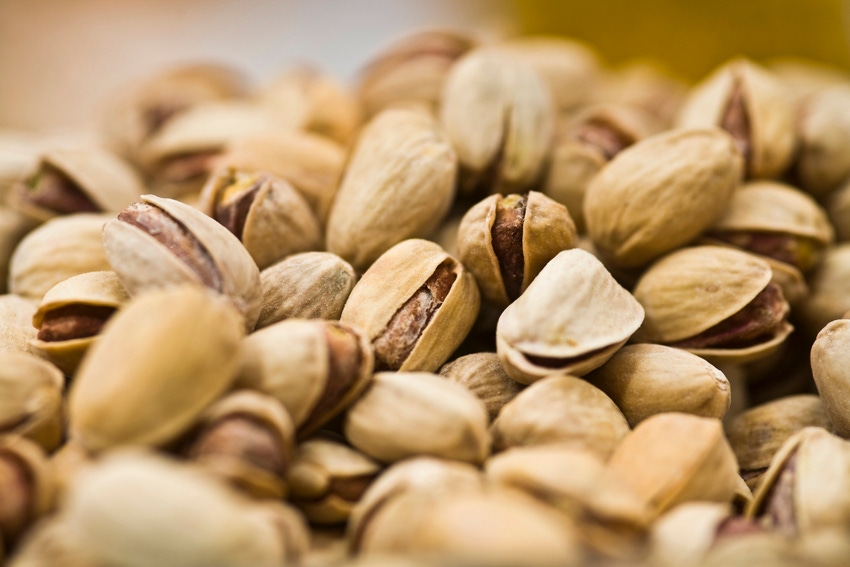
With the pistachio industry completing the 2017 harvest with 2 percent average navel orangeworm (NOW) damage, industry leaders say action is necessary to protect lucrative export markets, as well as domestic markets.
California Pistachio Research Board Manager Bob Klein, speaking at the annual University of California-hosted Pistachio Day, said the increase in navel orangeworm feeding damage in pistachios has increased levels of aflatoxin in overseas shipments. Exceeding established tolerances for this mycotoxin would mean shipment rejections.
Aflatoxins, the most common type of mycotoxin, are known carcinogens. They are produced by molds, primarily of the Aspergillus genus. Mold spores in the soil and dust can be transferred to split pistachio nuts by navel orangeworm feeding.
NOW damage levels over about 0.5 percent make meeting aflatoxin tolerances in some markets difficult, Klein says. Countries that have regulations against aflatoxin-contaminated imports — and enforce them with stringent testing or rejection of shipments — cost the industry.
In addition to losing consumer confidence, a rejected shipment carries a $30,000 price tag. If hand sorting is required to keep infected nuts out of shipments, that will further add to processing costs.
TESTING NO GUARANTEE
Exporting processors do test for aflatoxin levels prior to shipment, Klein says, but that does not guarantee the shipment will be accepted. The samples are not averaged, and if one tests positive for aflatoxin above the tolerance level, the entire lot is rejected.
Iranian pistachios were banned from EU markets in 1996, he says, due to high aflatoxin contamination levels. U.S.-produced pistachios gained markets in the EU at that time, but consumer confidence was lost, and it was 10 years before market demand returned to previous levels.
In 2008, rejections of U.S pistachio imports led to a higher sampling rate. The number of rejected lots fell for a time, then climbed, leading to a mandatory 20 percent testing level, which was later dropped to 10 percent.
U.S. pistachio industry aflatoxin controls were audited by the EU last fall, Klein says, and through the Administrative Committee for Pistachios, the industry will be developing a formal voluntary aflatoxin testing and reporting program. This will lead to increased marketing costs, he says, but the hope is that the program will further reduce mandatory testing levels. The long-term solution, he says, is to produce pistachios with lower levels of insect damage.
ACHILLES HEEL
Early split nuts are the main source of aflatoxin contamination in the field. This “Achilles heel” of pistachios provides an ideal environment for NOW infestation, and an opening for aflatoxins.
Growers can reduce the percentage of early split nuts with irrigation management and avoiding tree stress. Early harvest also helps cut down on NOW damage. Using a rootstock that minimizes early split nuts, and careful use of dormancy-breaking chemicals can also prevent early splits.
Processors can reduce aflatoxin levels by drying nuts as soon as possible after arrival. Hand sorting can remove contaminated in-shell nuts, based on shell discoloration, shell size, or presence of insect frass. Storage at proper moisture levels and avoiding post-harvest rehydration will also prevent contamination.
There is another mycotoxin that regulators in the EU are now targeting, Klein says. Ochratoxin, produced by fungi related to those that produce aflatoxin, is causing concern in some export markets. This mycotoxin has not been a concern in the past, and little is known about it.
It’s likely, Klein says, that the conditions that cause aflatoxin also increase OTA, but there is no current research. The EU is not testing pistachios for this mycotoxin, but importers in The Netherlands are testing for it, and have set a 10 parts per billion tolerance for OTA.
About the Author(s)
You May Also Like




